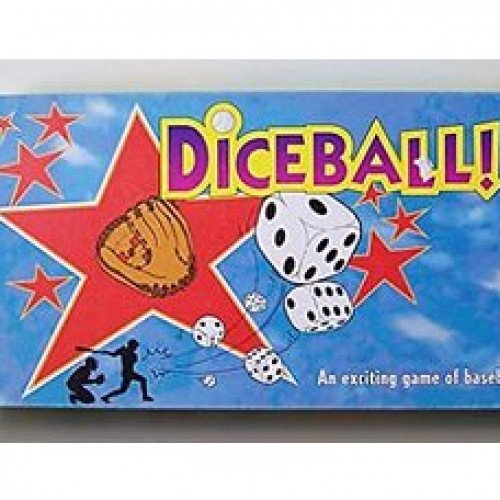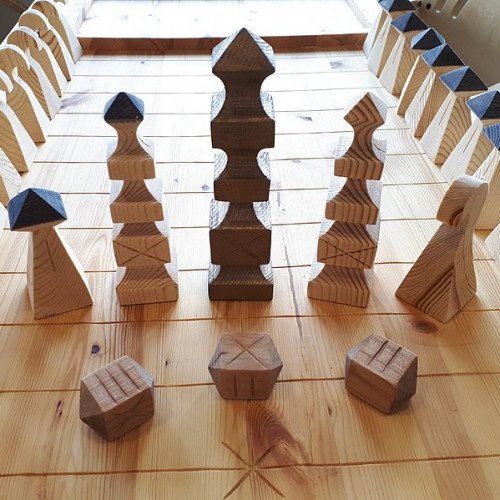DICEBALL VS SÁHKKU

DICEBALL
Diceball! is a board game in which two players roll dice to simulate a baseball game, one representing the visiting team and the other the home team. Both players use the dice to throw the baseball from the mound to the plate and field the ball on defense. Diceball! was designed to mirror the statistical reality of baseball. A regular game of Diceball! without extra innings lasts about 45 minutes. The game was designed in 1979 on a pizza box by a 16-year old Daniel Girard from Rawdon, Québec, while the Montreal Expos were chasing the pennant in the National League. Girard brought his game to his high school, where he organized tournaments with other students. Given the popularity of the game in his school, Girard also brought his game to university where it also became popular. The interest created by the game was noticed by entrepreneur Louis Desjardins, who launched the game with Girard. To start the game, the visiting team puts a pawn (as a batter and eventually runner) in the batter's box, to get the pitcher's throws. The die replaces the ball. The pitcher rolls the die until either the batter is struck out, the batter is walked, or the ball is hit. If the ball is hit, the offensive team rolls a die to determine the number of dice to be used to hit the ball. The number of dice indicated are rolled and added up. Numbers from 1 to 36 show the location where the ball is hit and the ball is placed on the game board. If the ball is hit on a circle, the ball was hit in the air and an out is recorded. If the ball is hit on a number in a cloud, it is a ground ball and that the batter will have to try to reach a base before the defense throws to that base. If the ball is hit to a star-shaped zone, the runner starts to run around the bases while the defence recovers the ball on the star. If the stars are from 27 to 36 it is a home run and all runners score. Every batter who runs around the bases and reaches home plate before three outs scores a run. As soon as three outs are recorded, stranded runners are removed from the bases. The teams trade places: the defense becomes the offense.
Statistics for this Xoptio

SÁHKKU
Sáhkku is a board game of the Sami people. The game is traditional among the North Sámi, Skolt Sámi, Inari Sámi and Lule Sámi but may also have been played in other parts of Sápmi. Sáhkku is a running-fight game, which means that players move their pieces along a track with the goal of eliminating the other players' pieces. Many different variants of sáhkku have been played in different parts of Sápmi. The oral transfer of the sáhkku rules between generations was largely broken off during the 1900s (see Sáhkku today). A few of the local variants have survived into our time, other local variants have been reconstructed based on a combination of memories and written sources, and for some places only fragments of the local rules are known from old documents. A sáhkku board (sáhkkufiellu, bircunfiellu or sáhkkulávdi) can traditionally be designed in a number of different ways. At its simplest, a sáhkku board has three parallel rows of short lines, and the pieces are placed on these lines. The lines are called sárgat (one sárggis) in Sámi. It is common to draw the short lines as vertically connected to each other, so that the board appears to consist of just one row of very long lines, but the game is still played as if these were three separate rows of short lines. Such boards often also have three horizontal lines intersecting the vertical lines in order to illustrate that the lines are still in practice divided into three parallel rows. Some boards feature only a central horizontal line crossing the connected vertical lines, but the game is still played as if there were three rows of short lines. A special type of sáhkku board is the so-called Návuotna board which has three rows of squares (ruvttat, lanjat) instead of lines. The central line/square of the middle row, sometimes referred to as "the Castle", is indicated by a sáhkku-symbol ("X"), sun symbol, or other ornament.